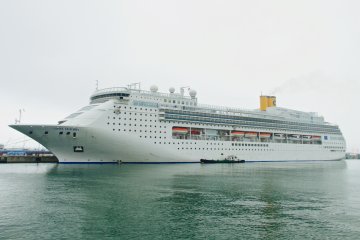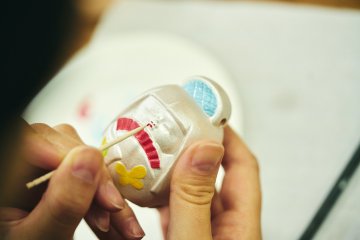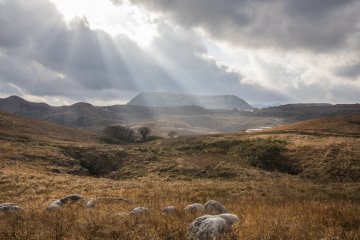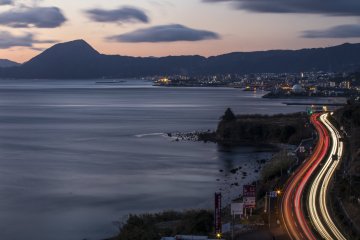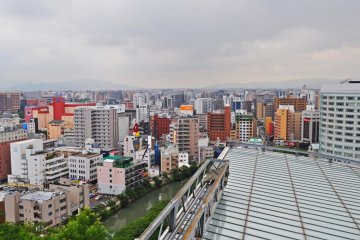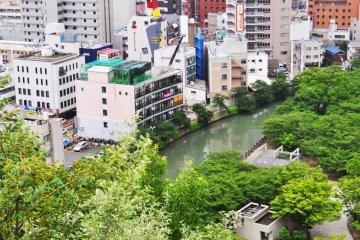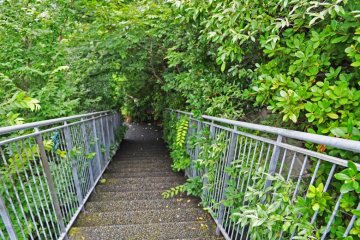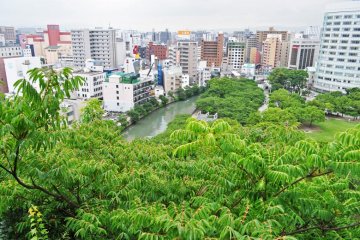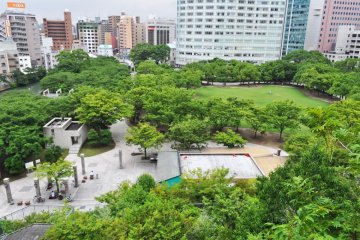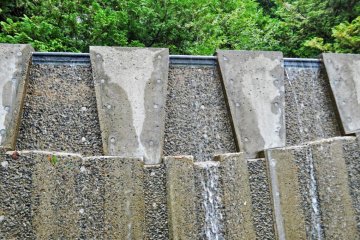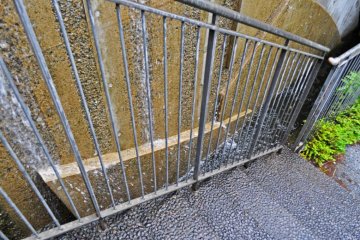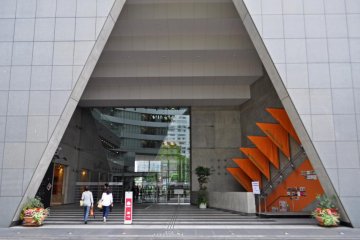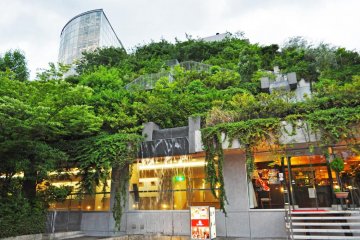The ACROS building in Tenjin is a wonderful example of eco-architecture. It serves as an example of how urban landscapes can incorporate nature into their designs and provide green spaces in the city. ACROS has a steps garden that runs up the façade of the building in the shape of a staircase. The south side of the building is constructed from fifteen levels that lead up to the observation deck. On each level they have planted flowers, shrubs and trees. It is estimated that there are 50,000 plants and 120 different species of plants in the garden. The vegetation also attracts a large number of birds. One of the most fascinating aspects of this garden is how the irrigation system was designed.
The ACROS building uses the same design of a mountain in terms of water drainage. This allows natural irrigation to occur as water streams down from the top of the building. The vegetation is watered on the way down. On each level there is a pool where the water collects. The water streaming down from the top fills up the pools. Once a pool has reached its capacity it overflows and fills up the pool below. This is how water is filtered throughout the garden. Beyond the purpose of watering the garden this system has another benefit. It allows for cooling of the roof area, which means that in summer less air conditioning is needed. This also means that CO2 emissions are reduced though I am not sure by how much.
The steps garden is free to visit during the day. It will take you between 5 and 10 minutes to reach the top. Be warned there is no gentle winding path to the top but, as you would expect, staircase after staircase. The top provides a beautiful view of Fukuoka. When I was there the observation deck was unfortunately closed, I believe it offers an excellent panoramic view of the city. The garden is opened at different times according to the season. It usually opens at 9 am and closes at 6 pm. The observation deck is only on Saturdays, Sundays and holidays.
Inside the building you can find designer clothing shops, many stores and restaurants, Fukuoka Symphony Hall, the International Conference Hall, Kokusai Hiroba (an international exchange center with foreign newspapers, Japanese classes, and more), a Cultural Information Center with tourist information, and a traditional arts and crafts gallery.
This building won several awards for its architecture including first prize for the 2001 Japan Institute of Architects Certificate of Environmental Architecture. If you ever find yourself in Fukuoka, this building is well worth the visit.



